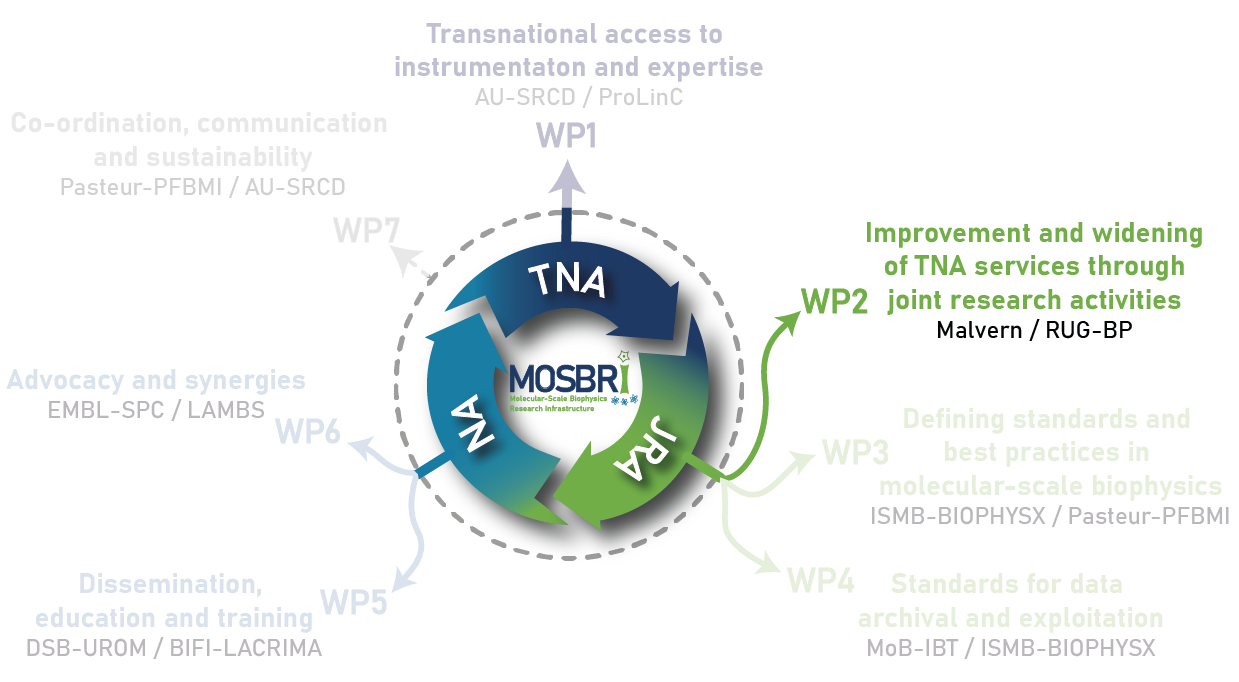WP2: JRA – Improvement & widening of TNA services
- Leader: Natalia Markova (Malvern, Malvern, UK)
- Co-leader: Wouter Roos (RUG-BP, Groningen, NL)
The main aim of WP2 is to develop and expand TNA by improving and widening the offer to users. Key partners will be involved in mining and securing the improvements in pipelines and technologies and overseeing their implementation across the MOSBRI network.
Three tasks of the WP centred on the objectives will be initialised by the task leaders in the first year of MOSBRI. This period aims at identifying novel methodologies and improvements and analysing their appropriateness for further development by MOSBRI partners. Most outcomes and implementations will be periodically made public, except where pending patents might restrict this temporarily. The aim at the end of MOSBRI is to publicize all developments.
The overall objectives are:
- To widen the TNA possibilities offered by (co-)developing new methodologies and approaches in joint academia/industry R&D activities.
New technologies are constantly being developed, and a task of this WP will not only aim at monitoring the emergence of new methods, but also at actively engaging with developers, including those of analysis software. Where possible, MOSBRI will engage in co-development with industry and any new methodologies and techniques developed by the MOSBRI partners will be monitored and prepare them for wider implementation.
In this JRA, we aim to push commercial instruments beyond their manufacturer’s specifications, in collaboration with industry. We will develop new experimental protocols and computational analysis procedures, to describe size distributions of heterogeneous biological samples and to determine protein intrinsic viscosities, providing key data about molecular shape and structure, intramolecular interactions and hydration. This approach to find new applications for existing commercial techniques, includes advanced heterogeneous sample characterisation pipelines, combining multiple-model SAXS analysis and light scattering technologies.
- To combine and integrate existing techniques and to identify and test novel techniques in order to make them available for new TNA approaches.
After identifying novel technologies and possibilities for co-development, we will engage in discussions with the MOSBRI partners who could benefit directly from these developments, and ultimately use them to improve the methodology available to the users of MOSBRI. The existing technologies can be integrated better, increasing their appeal and impact.
- To increase access to TNA services by improving and widening the scope of application and quality of data obtained from existing techniques and methodologies.
In close collaboration with the TNA manager who oversees all the outcomes of user access, methodological improvements based on interactions between users and their hosts will be identified. The interplay between user and hosts in TNA is rarely a mono-directional interaction, and new ideas often sprout from a TNA visit. These ideas will be harvested, translated into methodological improvements, and ensure that they are disseminated as widely as possible, not only to the MOSBRI partners but among the wider biophysical community and beyond.

